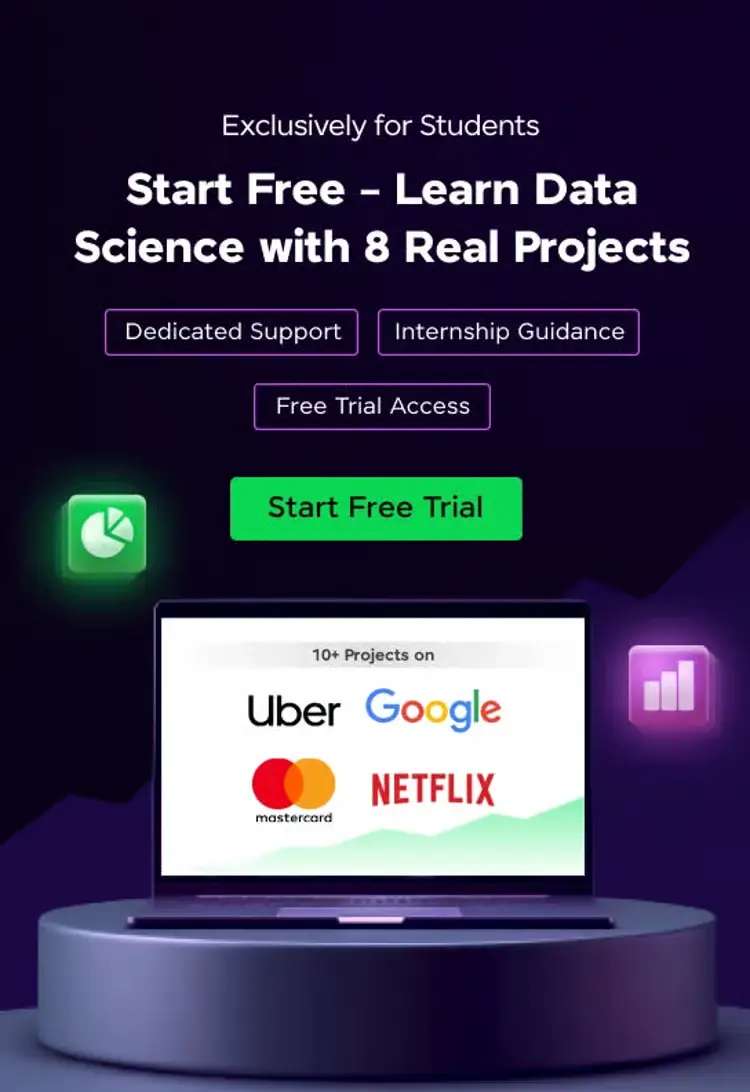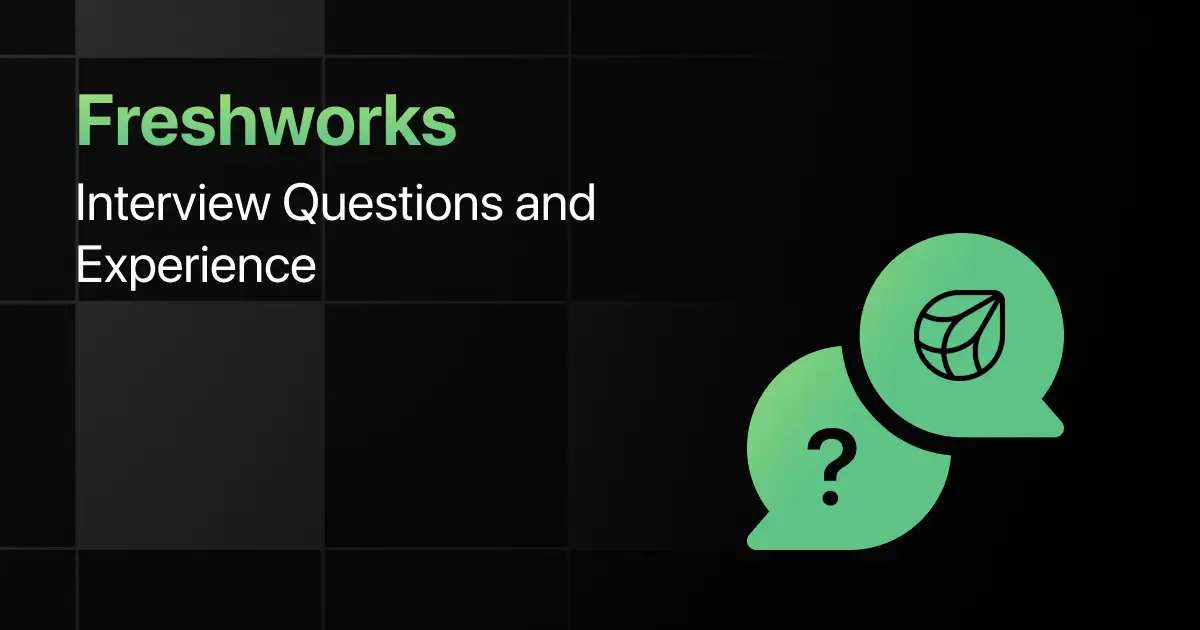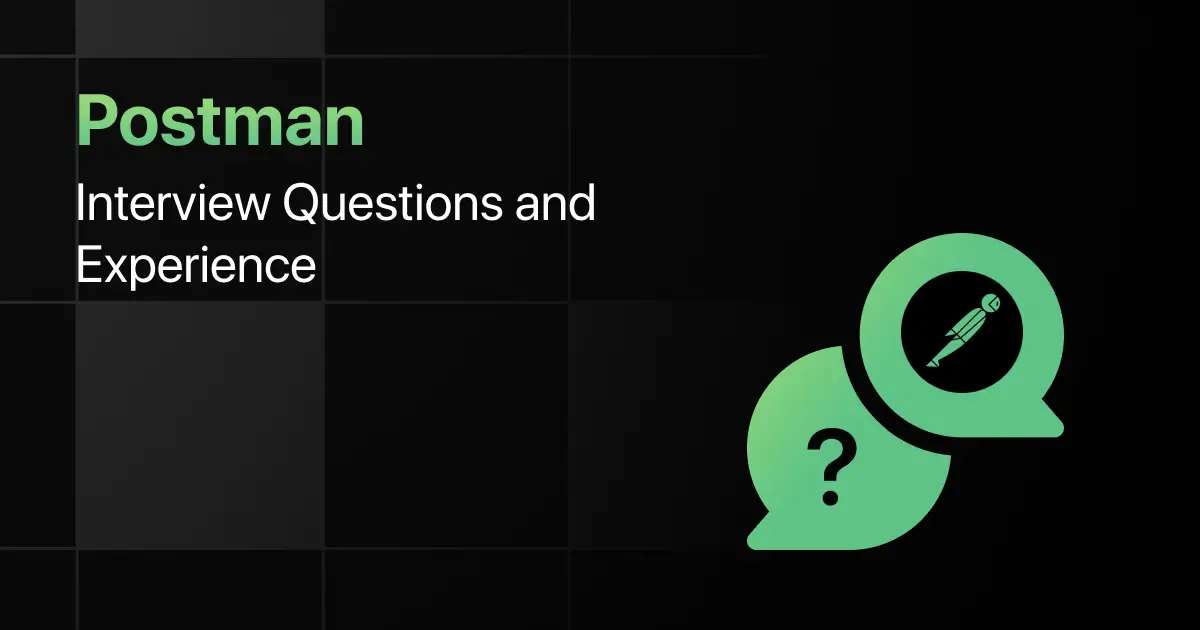Apple Interview Questions and Experience
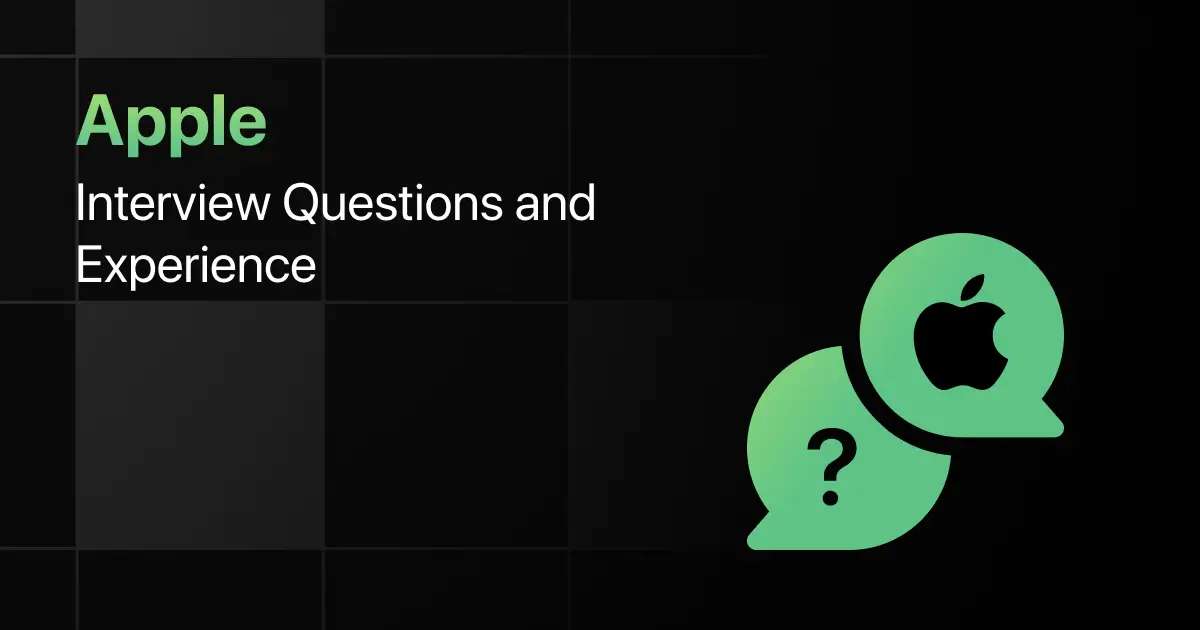
Have you ever dreamed of working at Apple, one of the world’s most admired tech companies?
The hiring process is rigorous and challenging, leaving many candidates unsure of where to start. But with the right preparation, you can navigate each stage confidently.
In this blog, you’ll learn about Apple’s hiring process, common interview questions, and strategies to prepare effectively. If you are aiming to join Apple, this guide will help you get one step closer to your goal.
Apple Hiring Process – Overview
Here’s a quick overview of Apple’s hiring process:
| Category | Details |
|---|---|
| Eligibility | Open to both freshers and experienced candidates. Preferred degrees include B.Tech, M.Tech, MCA, or related fields in Computer Science, IT, or Electronics. |
| Rounds | Typically 4–5 rounds: Online Assessment, Technical Interviews (2–3 rounds), Managerial/Team Fit Round, and HR Discussion. |
| Job Roles Offered | Software Engineer, iOS Developer, Hardware Engineer, Product Designer, Data Scientist, and Support Roles depending on requirement. |
| Salary Range | Freshers: ₹12–18 LPA (Glassdoor/Levels.fyi). Experienced: ₹25–60+ LPA depending on role, skills, and seniority. |
| Apply Link | Apply Now |
Top Apple Interview Questions
Apple interviews are known for their depth in technical, role-specific, and behavioral aspects. Candidates are expected to showcase strong problem-solving skills, real-world project knowledge, and alignment with Apple’s culture of innovation.
Below are the categories of questions with sample answers you can use as preparation.
1. Technical Questions
- What is the difference between process and thread?
A process has its own memory space while threads within a process share memory. For example, Safari browser is a process, and each open tab runs as a thread. - How do you detect a cycle in a linked list?
I would use Floyd’s Cycle Detection Algorithm, where one pointer moves one step at a time and the other moves two steps. If they meet, a cycle exists. - Explain the concept of normalization in databases. Why is it important?
Normalization organizes data into structured tables to reduce redundancy. For example, instead of storing customer details repeatedly in every order, a separate customer table is maintained. - What is the difference between stack and queue?
A stack follows LIFO, like the undo feature in Pages, while a queue follows FIFO, like tasks waiting in the print queue. - How would you implement a queue using two stacks?
I would use one stack for enqueue operations and another for dequeue. When the dequeue stack is empty, I transfer all elements from the enqueue stack. - What is ACID property in databases?
It ensures reliable transactions. For example, while purchasing an app on the App Store, Atomicity guarantees that either the full payment succeeds or nothing is charged. - How do you handle exceptions in Swift?
I use do-catch blocks. For instance, when reading a file, I wrap it in do { try … } catch { … } to handle errors gracefully. - Explain multithreading and its use in iOS applications.
Multithreading allows tasks to run concurrently. For example, loading images in the background while the UI remains responsive. - What is the difference between TCP and UDP?
TCP is connection-oriented and reliable, used for FaceTime calls, while UDP is faster but less reliable, often used in live video streaming. - How does garbage collection differ from ARC in iOS?
Garbage collection is automated memory cleanup, while ARC (Automatic Reference Counting) in iOS manages object lifetimes by counting references. - What is a REST API and how have you used it?
A REST API allows communication between systems using HTTP methods. For example, I used a REST API to fetch real-time weather data into an iOS app. - Explain polymorphism with an example.
Polymorphism allows one interface to have many implementations. For instance, a Shape class may have subclasses like Circle and Square, each overriding the draw() method. - What is the difference between heap and stack memory?
Heap memory stores dynamic objects like arrays, while stack memory is used for function calls and local variables. - How do you optimize a slow SQL query?
I analyze the execution plan and add indexes where needed. For example, indexing the email column in a users table improved login query performance. - What is the difference between synchronous and asynchronous calls?
Synchronous calls block execution until completion, while asynchronous calls allow tasks to continue. For instance, iOS network calls are usually asynchronous to avoid freezing the UI.
2. Role-Based Questions
For Freshers (Software Engineer / SDE 1)
- Why do you want to join Apple as a fresher?
Apple offers the opportunity to work on innovative products at global scale, while learning best practices from some of the world’s top engineers. - What are the key challenges a fresher might face at Apple?
Adapting to Apple’s high design standards, learning proprietary tools, and delivering quality work under strict deadlines. - How would you explain object-oriented programming to a non-technical person?
It’s like organizing everything into real-world objects — for example, a “Car” object with properties like speed and functions like drive or stop. - How do you keep yourself updated with the latest technologies?
By following developer conferences, official Apple documentation, and practicing regularly on platforms like Placement Preparation.
For Hardware Engineer
- What is the importance of low-power design in Apple devices?
Low-power design improves battery life and device efficiency, which is critical for Apple’s portable products like iPhones and MacBooks. - Explain the difference between synchronous and asynchronous circuits.
Synchronous circuits operate with a global clock, while asynchronous circuits work without one, improving speed and reducing power usage in certain cases. - How do you approach debugging a faulty hardware prototype?
By isolating components, analyzing signals with testing tools, and checking for design or manufacturing defects systematically. - Why is thermal management crucial in Apple’s hardware design?
To prevent overheating, ensure performance consistency, and extend the life of compact devices like MacBooks and iPads.
For Data Scientist / ML Engineer
- What role does machine learning play in Apple’s products?
ML powers features like Siri, Face ID, autocorrect, and personalized recommendations, enhancing the overall user experience. - How do you handle class imbalance in a dataset?
By applying techniques like oversampling, undersampling, or using algorithms designed to handle imbalanced data such as SMOTE. - How would you improve Siri’s response accuracy?
By integrating contextual learning, better NLP models, and reinforcement learning based on user corrections and preferences. - What evaluation metrics would you use for a Face ID recognition model?
Precision, recall, F1-score, and false acceptance/rejection rates, since security and accuracy are both critical.
For Product / Design Roles (Product Manager, UI/UX Designer)
- How do you prioritize features for an Apple product?
By balancing user needs, business goals, technical feasibility, and Apple’s design philosophy of simplicity and user delight. - What is Apple’s design principle “less is more” and how would you apply it?
It means focusing on simplicity and clarity — removing unnecessary elements to deliver a seamless and intuitive user experience. - How do you incorporate user feedback into product development?
By analyzing feedback trends, testing prototypes, and refining designs without compromising Apple’s usability standards. - Why do you think attention to detail is crucial in Apple’s product design?
Because even small design flaws can impact brand reputation, while meticulous details enhance usability and premium perception.
3. Behavioral Questions
- Tell me about a time you faced a challenging problem and how you solved it.
During my internship, I faced a memory leak issue. I debugged it using Instruments and fixed it by removing strong reference cycles. - Describe a situation where you worked in a team under pressure.
In a group project, our app crashed hours before submission. We divided tasks, quickly identified the bug, and delivered on time. - Give an example of when you showed leadership.
I led my project team by assigning tasks, ensuring accountability, and motivating members, which resulted in us winning the college hackathon. - How do you adapt to new tools or technologies quickly?
When my internship required React Native, I followed tutorials, built small demos, and integrated it into the main project within two weeks. - Tell me about a mistake you made and what you learned.
I once pushed code without testing, which broke the build. Since then, I always run automated tests before committing changes. - How do you handle feedback from peers or managers?
I accept feedback positively, analyze it, and implement changes. For example, feedback on my code readability led me to adopt consistent naming conventions. - Why do you want to work at Apple?
I admire Apple’s focus on design and innovation. I want to contribute to building products that positively impact millions worldwide. - How do you stay motivated during long projects?
I set small goals and celebrate milestones. For instance, while working on a semester-long project, I stayed motivated by tracking weekly progress.
Apple Interview Experiences
1. Machine Learning Engineer Interview Experience (Fresher)
Here’s the interview journey of Pranali Bose, who appeared for Apple’s Machine Learning Engineer role in 2025.
Candidate Background:
Pranali had prior experience in machine learning, with expertise in NLP, GenAI, embeddings, and full-stack ML workflows. She had industry exposure as a trainer and ML engineer intern, along with solid foundations in CS concepts and data pipelines.
Interview Process They Faced
- The process had 7 rounds:
- Senior Manager Discussion – DSA problems (balancing array conditions).
- Senior Manager Round – custom data structure design, GenAI concepts (hallucinations, embeddings, vector DBs), and ML fundamentals.
- Technical Round (NLP focus) – cleaning text corpus, predicting next words.
- Technical with Manager – CS fundamentals, sorting, tree traversals, debugging pipelines.
- Technical Round – GenAI and ML architectures, fine-tuning vs retrieval, transformers, embeddings, chunking.
- Technical Round – OOP concepts, data storage, handling large-scale data integration.
- Behavioral Round – project recovery, process improvements, conflict management, leadership situations.
Questions Asked
- Array balancing and custom data structures.
- GenAI concepts like hallucination handling and embeddings.
- NLP problem-solving on text cleaning and predictions.
- Parallelism vs concurrency, sorting efficiency, tree traversals.
- Transformer architecture, fine-tuning vs retrieval methods.
- OOP principles (static vs class methods, metaclasses).
- Leadership and conflict resolution scenarios.
Outcome & Difficulty Level:
Pranali cleared the process and received an offer after a month. She found the GenAI and NLP rounds the toughest. Her advice was to prepare holistically — strong DSA, applied ML, and all resume skills, since Apple’s process varies team to team.
2. Software Engineer role Interview Experience (Experienced)
Here’s the interview experience of Debmalya Pan, who appeared for Apple’s Software Engineer role (Java, Spring Boot, Microservices) in 2025.
Candidate Background:
Debmalya applied for an SWE role at Apple Hyderabad via the careers portal. He had prior experience in backend development with strong skills in Java, Spring Boot, microservices, and distributed systems.
Interview Process They Faced
- The process had 5+ rounds:
- Online Assessment – Trapping Rain Water problem, Java & Spring Boot MCQs.
- Technical Round 1 – Java fundamentals (Spring Cloud, interfaces, CAP theorem, lambdas, resiliency patterns).
- Technical Round 2 – system design (BookMyShow end-to-end), Java cache, concurrent collections.
- Behavioral Round (Managerial) – STAR-based questions (innovation, disagreements, deadlines, adopting new tech).
- Technical Round 3 – Java + HLD + DSA (Immutable class, TinyURL design, top-K frequent elements).
- Technical Round 4 – LRU Cache implementation with thread-safety (locks, ConcurrentHashMap), string internals, equals() & hashCode().
Questions Asked
- DSA: Trapping Rain Water, top-K elements, LRU Cache.
- Java: Spring Boot vs Spring MVC, CAP theorem, lambdas, resiliency patterns.
- Design: BookMyShow system, TinyURL design with Base62/MD5 approaches.
- Concurrency: thread safety, locks, ConcurrentHashMap.
- Behavioral: team conflicts, innovation, delivering under deadlines.
Outcome & Difficulty Level:
Debmalya successfully cleared the rounds and received an offer. He highlighted the system design and concurrency rounds as the most challenging. His key takeaway: Apple’s process is not fixed, it differs by role and interviewer, so candidates must prepare for a broad range of technical and behavioral topics.
Preparation Tips for Apple Interviews
Apple interviews emphasize innovation, problem-solving, and cultural alignment. To stand out, focus on both technical expertise and Apple’s product-driven mindset.
- Master the Basics: Revise computer science fundamentals such as algorithms, operating systems, and system design, since Apple tests core problem-solving abilities.
- Understand Apple’s Ecosystem: Be familiar with Apple products, technologies, and design philosophy, as interviewers may ask how you’d improve or innovate within them.
- Focus on Problem-Solving: Practice analytical and scenario-based questions, as Apple values creativity in approaching complex technical and business challenges.
- Prepare Behavioral Stories: Use the STAR method to answer cultural fit and teamwork questions, emphasizing ownership, leadership, and adaptability.
- Know the Role: Review role-specific expectations, whether in software, hardware, data, or design, and prepare practical examples from your experience.
- Mock Interviews: Simulate interviews with peers or mentors to build confidence and refine how you structure and deliver answers.
Final Words
Apple’s interview process is known for its rigor and high standards, but with the right preparation, it’s completely achievable. Focus on technical depth, product knowledge, and aligning with Apple’s design-driven culture.
By preparing strategically, you can confidently showcase your skills and secure a role at Apple.
Explore More for
- Amazon
- Salesforce
- Oracle
- Microsoft
- IBM
- Adobe
- Flipkart
- Uber
- Meesho
- Zomato
- Swiggy
- Phonepe
- Zoho
- Postman
- Freshworks
- Paytm
- Darwinbox
FAQs
Apple interview questions often cover algorithms, system design, hardware concepts, behavioral scenarios, and product-related problem-solving questions to assess innovation and adaptability.
Apple interview questions for freshers are moderately tough, testing computer science fundamentals, logical reasoning, and cultural alignment with Apple’s values and innovation-driven approach.
The Apple interview process generally takes 3–5 weeks, depending on the role, number of interview rounds, and scheduling with different teams.
Candidates should focus on data structures, operating systems, system design, hardware fundamentals, and Apple ecosystem knowledge such as iOS or macOS development basics.
Common mistakes include weak problem explanation, neglecting product knowledge, lack of attention to detail, and failing to prepare for behavioral or cultural questions.
Apple’s hiring process typically involves 4–5 rounds, including online assessment, technical interviews, role-specific problem-solving, and final HR or cultural fit discussions.
Yes, freshers face basic coding, problem-solving, and CS fundamentals, while experienced candidates are tested on advanced system design, scalability, hardware, or product leadership skills.
The best way to prepare for Apple interviews is consistent practice, studying Apple’s ecosystem, and using PlacementPreparation.io for role-specific interview resources.
Related Posts
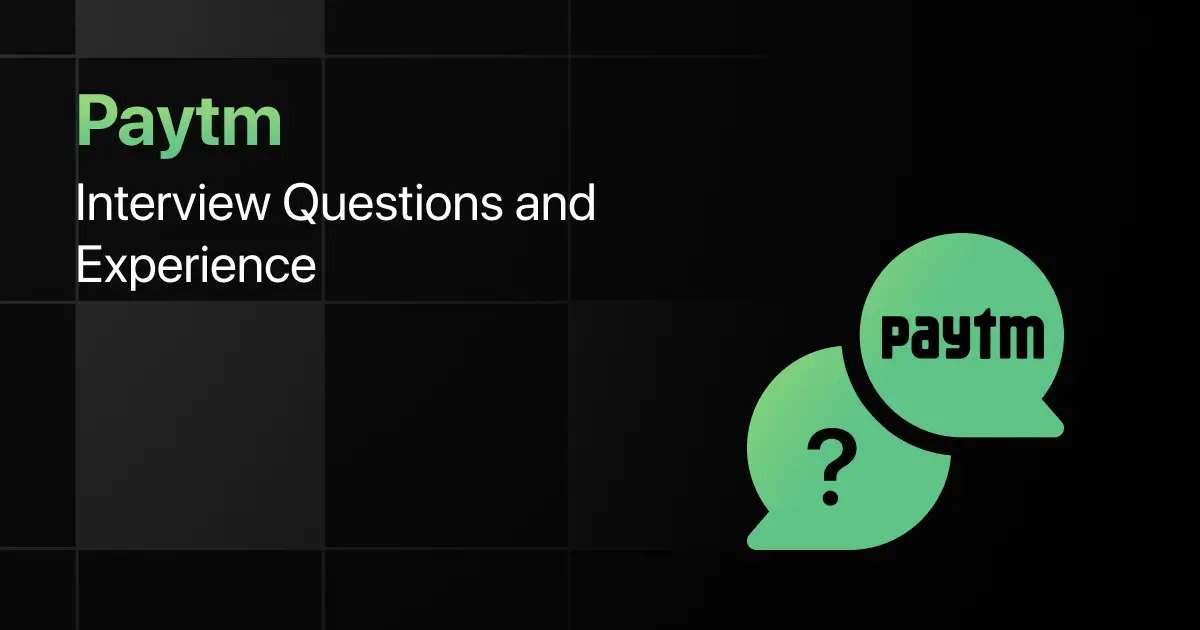

Paytm Interview Questions and Experience
Preparing for a Paytm interview requires a clear understanding of the company’s hiring process, the type of questions asked, and …
Warning: Undefined variable $post_id in /var/www/wordpress/wp-content/themes/placementpreparation/template-parts/popup-zenlite.php on line 1050


